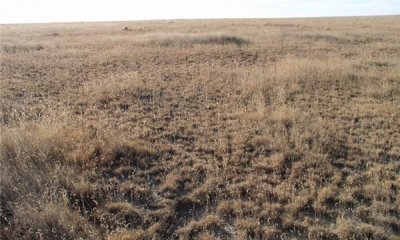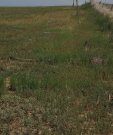
Loamy Plains
Scenario model
Current ecosystem state
Select a state
Management practices/drivers
Select a transition or restoration pathway
-
Transition T1A
Long-term heavy grazing without adequate recovery period.
More details
Interruption of the natural fire regime. -
Transition T1B
Native rangeland is plowed to convert it to cropland use and abandoned.
More details -
Restoration pathway R2A
Prescribed grazing.
More details
Appropriately timed prescribed fire. -
No transition or restoration pathway between the selected states has been described
Target ecosystem state
Select a state
State 1
Reference



Description
The Reference State contains two community phases. These phases have been historically maintained by fire every14-20 years (Guyette, Richard P., and others. 2012), and herbivory with adequate recovery periods. High production of perennial grasses and extensive cover allow for increased soil moisture retention, vegetative production, and overall soil quality.
Submodel
Description
This state evolved under long-term heavy grazing pressure without adequate recovery. This is a very stable state, resistant to change due to the high tolerance of blue grama and buffalograss to grazing, the development of a shallow root system, and subsequent changes in hydrology and nutrient cycling. The loss of other functional/structural groups such as warm-season bunchgrasses, cool-season bunchgrasses, forbs, and shrubs, reduces the biodiversity productivity of this site.
Submodel
Description
The Tilled State has two community phases. This state is created when a tillage operation such as plowing, chiseling, and/or discing has been implemented on native grassland to convert it to cropland use. Historically, this state was largely created during the early 1900’s in the southern Great Plains region. Large tracts were plowed and planted to dryland wheat or other dryland crops. The subsequent Dust Bowl era of the 1930’s, coupled with the Great Depression caused much of this plowed ground to be abandoned. Today, some of this land is referred to as “go-back”, and is re-vegetating through autogenic processes. Other land has been re-seeded to native or introduced species. While there is a large component of “go-back” resulting from the early 1900’s, it also includes any cropland that is no longer in production and idled.
Submodel
Mechanism
Long-term heavy grazing without adequate recovery period drives the Reference State to the Shortgrass Dominated State. The interruption of the natural fire regime accelerates this process.
Mechanism
The Tilled State is created when native rangeland is plowed to convert it to cropland use, and subsequently idled or abandoned.
Mechanism
Applying the appropriate prescribed grazing system along with appropriately timed prescribed burning will convert State 2 back to the Reference State.
Relevant conservation practices
| Practice | External resources |
|---|---|
|
Prescribed Burning |
|
|
Prescribed Grazing |
Model keys
Briefcase
Add ecological sites and Major Land Resource Areas to your briefcase by clicking on the briefcase (![]() ) icon wherever it occurs. Drag and drop items to reorder. Cookies are used to store briefcase items between browsing sessions. Because of this, the number of items that can be added to your briefcase is limited, and briefcase items added on one device and browser cannot be accessed from another device or browser. Users who do not wish to place cookies on their devices should not use the briefcase tool. Briefcase cookies serve no other purpose than described here and are deleted whenever browsing history is cleared.
) icon wherever it occurs. Drag and drop items to reorder. Cookies are used to store briefcase items between browsing sessions. Because of this, the number of items that can be added to your briefcase is limited, and briefcase items added on one device and browser cannot be accessed from another device or browser. Users who do not wish to place cookies on their devices should not use the briefcase tool. Briefcase cookies serve no other purpose than described here and are deleted whenever browsing history is cleared.
Ecological sites
Major Land Resource Areas
The Ecosystem Dynamics Interpretive Tool is an information system framework developed by the USDA-ARS Jornada Experimental Range, USDA Natural Resources Conservation Service, and New Mexico State University.






